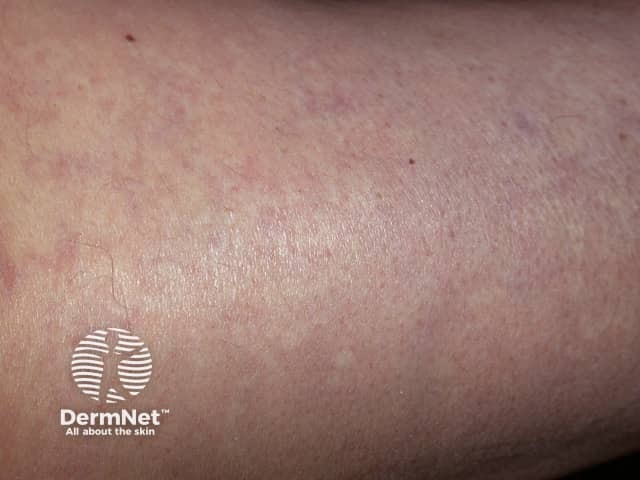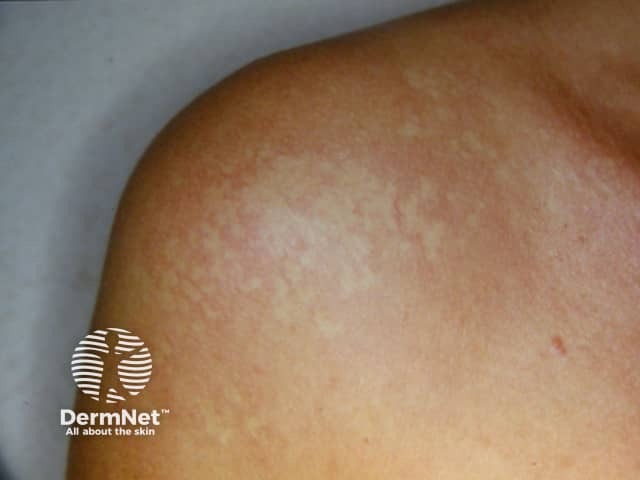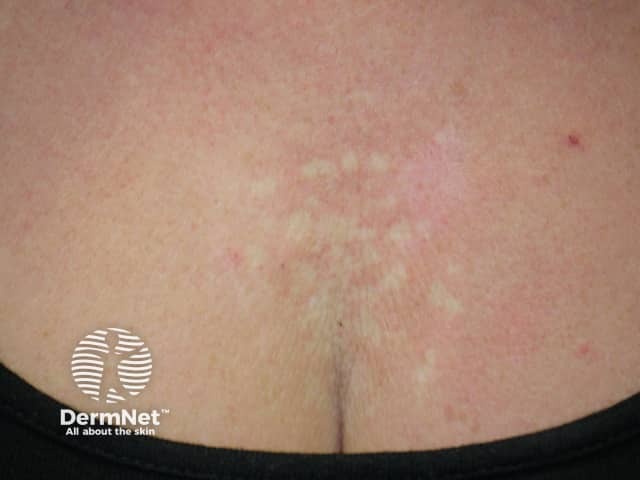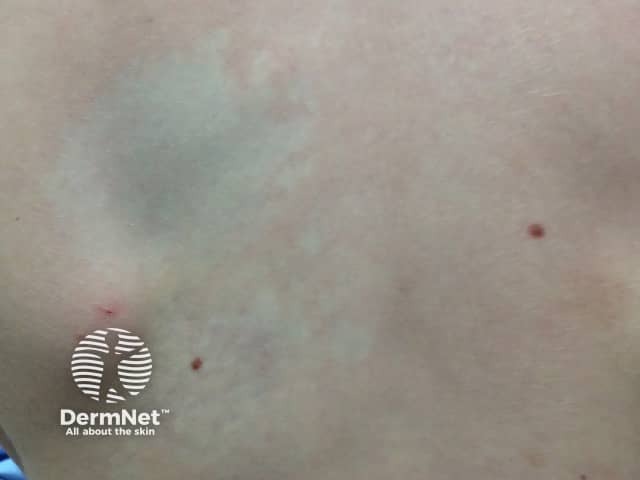Main menu
Common skin conditions

NEWS
Join DermNet PRO
Read more
Quick links
Author: Hon Assoc Prof Amanda Oakley, Dermatologist, Hamilton, New Zealand, 2015.
Introduction Demographics Causes Clinical features Diagnosis Treatment Outcome
Naevus anaemicus (nevus anemicus) is an uncommon capillary vascular malformation or birthmark in which there is a localised area of pale skin.
Naevus anaemicus is usually first noted in early childhood, although it is likely to be present at birth. It arises in all races. It is reported to be more common in females than in males.
There have been reports of naevus anaemicus in patients with neurofibromatosis type I and in a rare syndrome, phakomatosis pigmentovascularis.
The pale patches seen in naevus anaemicus are due to vasoconstriction. Abnormal blood vessels within the naevus have increased sensitivity to adrenaline and noradrenaline (circulating catecholamines). Catecholamines lead to blood vessel constriction through their interaction with α-adrenergic receptors. Deficient function of α-adrenergic receptors in the muscular walls of the blood vessels, and increased reactivity of α-adrenergic receptors may lead to permanent blood vessel constriction within a naevus anaemicus. It has also been suggested that there may be an abnormality in E selectin induction (an adhesion molecule) in the endothelium.
Naevus anaemicus is usually a single, asymptomatic pale patch that does not become reddened on rubbing. It tends to be roughly round, oval or linear in shape. Satellite macules may be seen around the main patch. A mosaic form with multiple anaemic naevi can appear reticulate, or net-like. It does not cause any symptoms.
Naevus anaemicus most often affects the trunk, but can occur at any body site.
Sometimes, other vascular anomalies are noted closeby, such as capillary malformation (port-wine stain).

Naevus anaemicus

Naevus anaemicus

Naevus anaemicus

Naevus anaemicus

Naevus anaemicus

Naevus anaemicus
Naevus anaemicus is a minor condition and not always recognised. It is diagnosed by its appearance. The contrast between the affected skin, in which the blood vessels are constricted, and the normal skin can be eliminated by pressing on the surrounding skin with a glass slide (diascopy). Biopsy findings are of normal skin.
Naevus anaemicus can be confused with other pale lesions on the skin, such as achromic naevus, pityriasis alba, pityriasis versicolor, vitiligo, postinflammatory hypopigmentation, ash-leaf spots of tuberous sclerosis, progressive macular hypomelanosis and scarring.
No treatment is necessary or available for naevus anaemicus, which is minor and harmless. Cosmetic camouflage can be used if desired.
Naevus anaemicus persists unchanged long term.